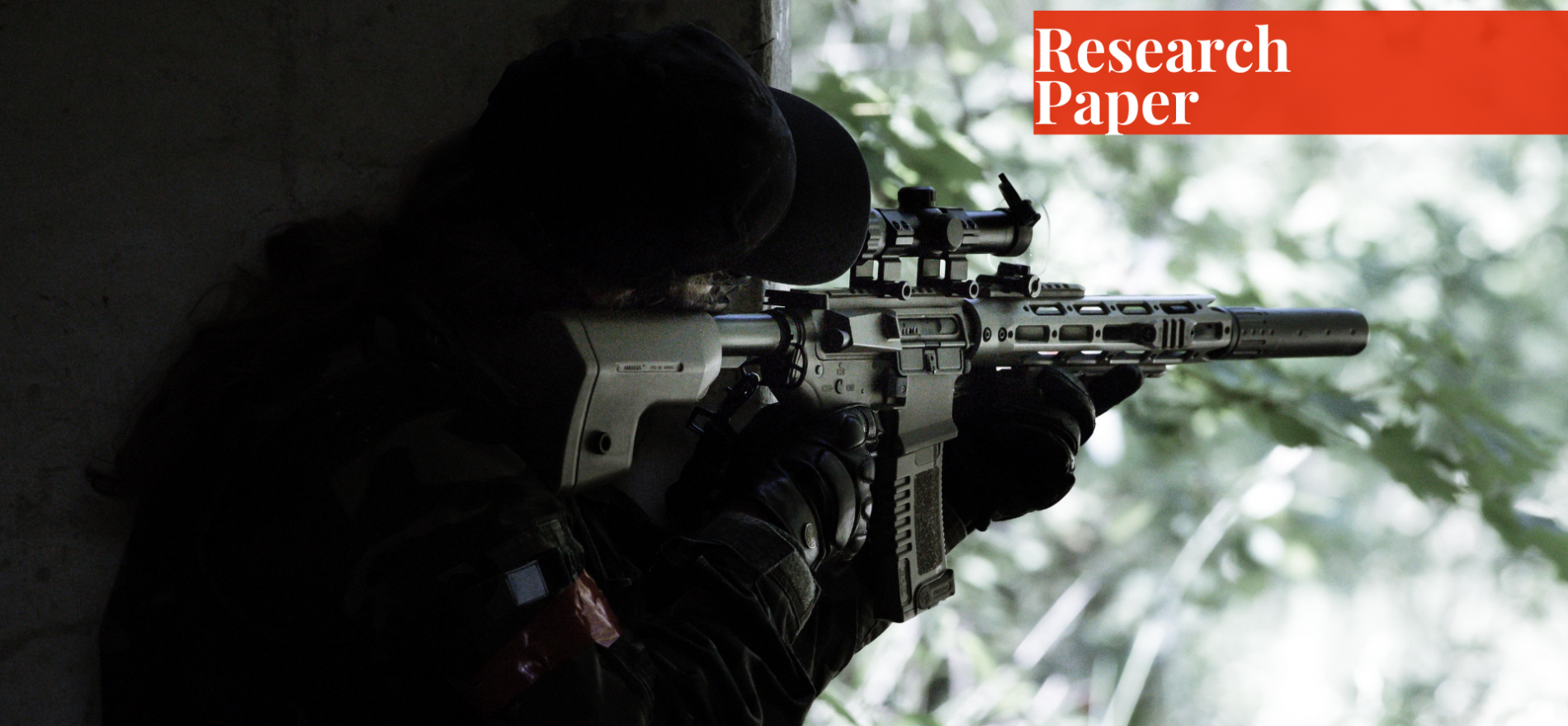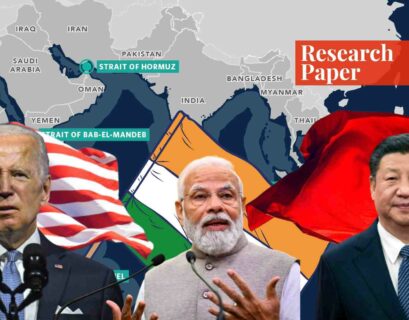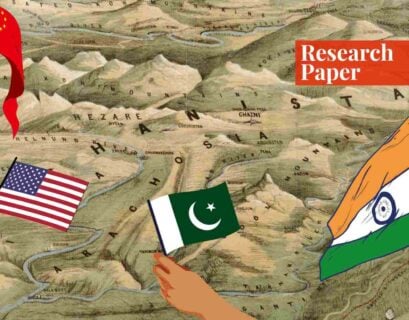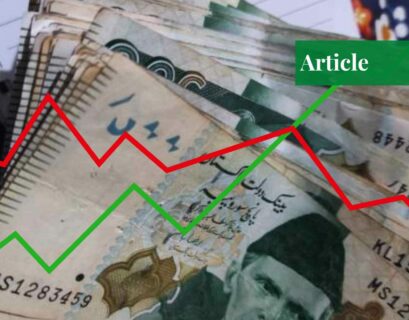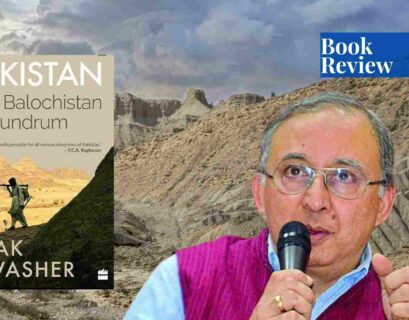Abstract
Modernization plays an important role in the politics of civilizations. From the days of industrialization till now, it is technology which is the main element in the game of war and international relations. The impact of new technologies is actively visible in the field of nuclear deterrence strategy.
The future of deterrence is also based on technology. Due to the shift of paradigm in doctrines because of the triad, thanks to technology, nuclear deterrence used to be on the first use. It later changed to second-strike capability. Now the trend is again shifting to first use. The case study considered for this is the Indian modernization and its impact.
The advancements of India’s nuclear armory and forced modernization, with the help of Russia and the U.S., initiated a new era of a shift in doctrine. This paper is written with the help of quantitative and qualitative research methodology. The theory used to assess the research is realism.
Introduction
The revolution of new technologies brings global nuclear order into flux. Extensive development of new technologies affects the way of thinking and use of nuclear strategy, weapons and deterrence. These new developments transform the demand side of nuclear deterrence, what type of threat needs to be deterred, and the type of weapons system and capabilities that can be used to achieve it.
The emergence of new technology also creates a grey zone between conventional and nuclear weapons, particularly in the Global North and Global South, which can be used to blur the deterrence equation even further.1 In the past, deterring a nuclear attack has been believed to be attained through the threat of nuclear retaliation but due to emerging technologies, deterrence strategies appear to be shifting.
From the time of WWII till now, the strategy of inflicting ‘greater pain’ to bring the enemy to their knees has evolved. Lawrence Freeman in his book ‘The Evolution of Nuclear Strategy’ describes how the nuclear bomb came into existence. Before the US nuclear strike in Japan, there was the concept of ‘Strategic Bombing’.
In this method of attack, the target used to be the civilians and industrial zones of the foe. The idea was to damage the backbone of the opponent not only militarily but also politically, economically, and socially. This gave birth to a nuclear weapon that was smaller in size but with bigger destruction capabilities.
Now, technology is pushing weaponry to a new level. All this for the purpose of creating fear of retaliation and for the greater political purpose that is maintaining long-lasting peace.
Changes in Technology and Nuclear Doctrines Go Hand-in-Hand
The shift of change in technology lead to the catastrophe of the world wars in 1914-1918 and 1939-1945. It is the technology that has changed the dynamics of war. WWII ended with the creation of the nuclear bomb which gave the same strategic edge as strategic bombing. With the help of technology, man reached the goal he desired to achieve.
It is said that with great power comes great responsibility. Nuclear technology did not just stop but changed with the evolution of technology. Technology gives the ideas of the present and the future. It also has an impact in the case of the nuclear deterrence doctrine weaving and on the changes happening in the arena of international relations. The nuclear doctrine dynamics change with the change in technology. Rivals cannot stop at any point and let the opponent win. Technological change is pushing states towards an arms race.
Research within the field of science compacted the nuclear bombs. Delivery vehicles’ speed and payload increased with the passage of time. The bases and silos for the nuclear missiles took places other than the land. These places were underwater and in space. It became the capacity of the triad for the second-strike capability, all thanks to technology.
This rapid change in technology gave new steps of thinking to the strategists, policymakers, defense analysts, scholars, etc. for the political and military use of nuclear weapons. Since the time of its first explosion in 1945, states changed their stances along with the changes in doctrines from time to time. They incorporated new weapons or delivery vehicles in the armory.
India is not among the first five nuclear states of the world but it is trying hard to upgrade and innovate its nuclear doctrine. Indian nuclear capacity is shifting very rapidly. In its consequence, it is also changing the dynamics of nuclear deterrence strategy. As a result, its development in nuclear and force modernization is becoming perilous for its neighbors—Pakistan and China.
Chronic Encounter of Technology Post-WWII
In 1939, the process of fission was becoming common in the science lobby. This came with the study of atoms. The deep understanding that when a uranium atom is bombarded with neutrons, it releases enormous amounts of energy, causing a chain reaction.
Such a chain reaction was achieved in 1942, under the Manhattan Project, to make the atomic bomb. By mid of 1945, the first test was run in New Mexico which was equivalent to 1800 tons of TNT. The US President called it “the most terrible weapon in the history of mankind“.
The Japanese were already defeated by this time and were surrounded by blockades with a heavy bombardment of B-29. The only problem was that the Japanese wanted to surrender with the favorable political conditions, so they continued their resistance. The US was looking for a target to use the atom bomb since 1943.
They knew that this weapon was not merely a weapon, it was a weapon of mass destruction. it was a psychological weapon that caused a great shock to the world. With no caveat, the US targeted the city of Nagasaki city on 6 August 1945. Regarding the surprise nuclear bombing on Japan, General Marshall claimed that “It is not good warning them. If you warn them there is no surprise. And the only way to produce shock is surprise.” This bomb was only a stage of the technological advancement of ‘automatic warfare’.2 The attack on Nagasaki and Hiroshima rescued the doctrine of strategic bombardment.
Two categories of technology played a crucial role in the aviation history of World War II i.e. RADAR and Bombsights. These technologies played a vital role in defensive and offensive strategies. Radio Detection And Ranging or RADAR was used for the first time in combat operations in World War II.
Radar is referred to as the weapon that won the war and the invention that changed the world.3 Radar is used to detect incoming aircrafts and direct anti-air defenses in the direction of these aircrafts. It is also used in offensive strategy; it gives aircrafts the ability to attack targets in unpleasant weather and at nighttime.
For targeting military and industrial areas with accurate bombing Bombsight is used. Bombsights allow bombers to fly at high altitude during their bombing missions and provide safety to them and their crews from anti-aircraft guns.4
In World War II a palm-sized device—Cavity Magnetron—was used. This device was not only essential for winning World War II but it also changed the way Americans prepared and consumed food. This device generates microwaves. The ability to produce short wavelengths, through the use of Cavity Magnetron, also increased accuracy over a greater distance.
Among the new technologies made during World War II or before, few got notable attention. The atomic bomb is one of the few. The use of the first atomic bomb started an arms race and kick-started a new era of new technology which changed the nature of wars.5
Emerging Technologies in the 21st Century
In today’s era, the new technologies are used broadly, for different reasons, by a lot of people. For some, technology is the promotion of transformation in nuclear capabilities. For others, technology has a wide definition. It includes drones or so-called killer robots, quantum computing, rail guns, directed energy weapons, and even nanotechnology. Nanotechnology is not yet a big part of nuclear technology but there is no doubt that it will be seen as hybrid technology, helping in nuclear science in the future.6
Notable advances in technology are happening in the contemporary time period such as working from space or from underwater. These advancements provide the capability to deal with huge amounts of information. They’ve expanded the military’s focus across various areas, enhancing the accuracy of military-grade technology and weapons. Technology has created more competent ballistic rockets and furnished both traditional and atomic weapons with more prominent complexity, lethality, and speed.7
The effects of Artificial intelligence, computerization, and the horde elements related to the ‘digital’ circle are reforming. Now atomic and non-atomic tasks could be led simultaneously. The atomic frameworks could be held defenseless against assault. These elements all, conceivably, challenge the focal significance of a second-strike nuclear power and atomic discouragement. 8
Impact of New Technology on Strategic Stability
The rise of new advancements has immediate and indirect military centrality. At times, it compromises of strategic stability as well. These technological advances are selectively driven by military objectives.
The innovation of weapons framework sways the essential element of strategic stability. It relies upon the power structures of adversaries, the limit of innovation, and how it is utilized or operationalized by various nations. British planes carrying warships in 1917 is one of the instances of this. US and Japan utilized airplanes to change the idea of ocean force and the British Navy utilized it for various reasons.9
During the Cold War, Multiple Independent Reentry Vehicles (MIRVs)—ballistic missiles equipped with nuclear warheads—were developed by the USSR and the USA. The arrangement of MIRVs on ICBMs, in either U.S or USSR silos, was defenseless against first-strike nuclear assault.
However, the arrangement of a similar innovation on the nuclear powered submersible ballistic missile, SSBN Armada of the U.S, is less threatening to key solidness. The successfully undetectable U.S. SSBNs do not entice a first-strike. MIRV-SLBMs may even now contrarily sway soundness by expanding an adversary’s fear of a mind-boggling first-strike. This shows that the destabilizing impacts of another innovation can be truthfully told to exacerbated doctrinal decisions and be moderated by an organization.10
Artificial intelligence, biotechnology, quantum computing, and cryptography are the innovations that can be recognized as having possible critical ramifications for strategic stability. Ordinary and hypersonic weapons, hypersonic float vehicles (HGVs), hypersonic cruise missiles (HCMs), and stealthy strategic autonomous systems incorporate weapons that may appear to an enemy as appropriate for executing first-strike.11
Indian Modernization
Hans J. Morgenthau stated in his book, Politics among Nations that “the aspiration for power on part of several nations, each trying to maintain or overthrow the status quo and policies aim to preserve it, leads to a necessity of configuration that is called balance of power”.
In the modern world, major powers ensued military modernization at a conventional and strategic level. According to the SIPRI report of 2019, India is the third-largest military spender in the world. India always has hegemonic ambitions and increased its defense budget by 6.8 % as compared to the 2018 budget.12
IAF is acquiring beyond-visual-range (BVR) stand-off missiles, METEOR, SCALP, and R-37, to aim Airborne Warning and Control System (AWACS) to support aircrafts within hostile air space. Indian Air Force tested BrahMos cruise missile and BVR Astra missiles with a range up to 500 km and 100 km, respectively.
The hegemonic nature of India can be seen in its ever-expanding naval force. It will be equipped with over two hundred vessels by 2027. India signed sale contracts with Russia containing the development of two guided-missile frigates, that valued $950 million, and a $3 billion nuclear-powered attack submarine.13
India contains a large level of weapons-grade plutonium that is being obtained in two reactors in Bhabha Atomic Research Centre, Mumbai. About 0.6 + 0.15 tons of military-grade plutonium is being kept by India. Around 6.5+3.5 tons of reactor-grade plutonium can be acquired from unsafe heavy water. This can be made available for military-grade plutonium in future.
India is also planning to build a 100MW reactor in Vizag. The estimated nuclear weapons of India are nearly about 125+ and they have a large amount of fissile material to produce 300 to 492 weapons.14
Such kind of advancements in the field of weapons and arms lead to new security dilemmas in the region. This situation is known as the stability-instability paradox. India’s own defensive posture then becomes offensive to its rival states. This scenario may escalate the arms race. Therefore, peace will always be in danger. It also threatens the sovereignty of other states in the age of anarchy. Deterrence in the time of stability-instability paradox becomes weak and nearly down to the level of ‘zero’.
India’s Arms Accumulation and Deterrence
The huge military of India is built on the pretext of China; India wants to counter China in the region. India and China fought a war in 1962 on the border dispute of the McMahon line. The war was a month-long and during it, Chinese forces penetrated deep into the Indian Territory leaving India with a deep sense of a humiliating defeat.15 Since then, Indians have used this war to advocate their force buildup.
India ranks second among the 29 largest armies in the world with an active military of 1,395,10. Its Air force is the 4th largest in the world with an aircraft strength of more than two thousand and a defense budget of USD 47 billion. It stands 7th in the ranking of the world’s 10 largest naval forces.16
Such a huge military force is said to be developed to impede China. This depicts India’s intentions to dominate the region. As mentioned above, India’s stance on its force buildup is to balance China, but it has regularly used it against Pakistan in multiple conflicts.
According to the official sources, the Indian Army’s soldiers will be equipped with brand new advanced assault rifles through a 700 crore rupees contract between the Indian Ministry of Defense and US firm Sig Sauer. With this contract, India will get around 72,400 assault rifles. These new rifles are substitutes for the military’s bid to acquire around seven hundred thousand assault rifles in 2017, but these 72,400 rifles will be acclaimed by the quick-track transportation procedure.
Besides, the Indian army was also planning to buy around 5,719 sniper rifles from international companies in January 2020 which were going to replace the Dragunov SVD rifles. These new rifles include .338 Lapua Magnum Scorpio TGT by Beretta and .50 caliber M95 by Barrett. The newly purchased sniper rifles will be given to the troops deployed along the LOC.17
World powers like Israel, the US, and Russia—which are against the Chinese influence in the region—have been supporting India in the form of defense collaborations and arms deals.On the visit of US Secretary Mike Pompeo, India took a step towards a major defense deal. India wants almost a dozen P8 I aircrafts for surveillance, reconnaissance, and anti-submarine operations. 18
The government of India placed orders for 22 AH-64 E Apache helicopters as part of a $1.4 billion deal back in September 2015. Apaches will replace the vintage Mi-35 Russian helicopters. Indian Air force received four of these and four more are coming soon, all of which would then be moved to the Pathankot Air force in Jammu and Kashmir.
This deal was an addition to the order for 15 CH-47F Chinook heavy-lift choppers from Boeing. India is also looking forward to buying 30-armed sea guardian (predators) drones for over $2.5 billion from the US. The Army, Air force, and Navy will each be provided with 10 of these.19 Furthermore, Russia has offered to provide India with SU-57 stealth Jets.20
Politics Over Modernization
India and Russia signed a 5 billion dollar deal over S-400 long-range missile defenses. The US administration warned India and said that this will have serious implications on their defense ties. The officials of the US administration mentioned that the United States does more military exercises with India than any other country.21
In a statement in July 2005, both India’s PM, Manmohan Singh, and U.S. President George Bush expressed the desire to achieve total civil nuclear energy cooperation and trade between the US and India. This provided a new energy source to India and investment opportunities for the United States. A nuclear deal is at the center place of a broader Indo-US partnership.22
The policymakers in the United States are afraid of the continuous rise of the Chinese economy. Similarly, India also has some suspicions about the forthcoming strategic interests of rising China. Washington is looking for a strong strategic relationship with India to contain China.
Though India does not want to serve as a strategic surrogate of the United States against China, they want to pursue a strategy that is not dangerous for them. The United States does not expect to use Indian territory against China in any conflict but it only expects India to gather crucial intelligence about Chinese military capability, specifically in the Indian Ocean and littoral states.23
Many scholars believe that the reason behind this civil nuclear deal is that the United States wanted to gain India’s trust and make it a vital strategic partner. The U.S. wants to make India stronger, and India wants to stand in the path of the growing Chinese power and the unpredictable and unstable Pakistan. India’s million-man army and its naval force make it a dangerous protector on the trade route between East Asia and the Middle East.
The U.S. believes that the geopolitically and eco-socially vibrant India could work as its partner to contain the expanding Chinese influence in South and East Asia. By helping India’s needs, the economic growth of India would play a big role in the US economy and improve the employment and job opportunities for the American populace.24
Conclusion
The extensive development of new technologies affects the way of thinking and use of nuclear strategy, nuclear weapons, and nuclear deterrence. In past deterring a nuclear attack has been believed to be attained through the threat of nuclear retaliation and due to these emerging technologies, it appears to be shifting.
States with nuclear technology, with grudges against one another, are in an arms race. Cases like India and Pakistan have taken the world’s attention. Both the states have nuclear and second-strike capabilities; they have already put the region in instability in terms of peace.
Pakistan with its limited economy is trying to catch up with India’s military force modernization. The modernization program of India has been transformative not only in material and training terms but also in the conceptual prism. It is said by Barry Posen in his book ‘Sources of Military Doctrine’ that an increase in defense of one state causes a security dilemma for the other state.
India’s mindset can be understood through its super-power dream and its desire to be dominant in the region. The ambitious plans of India consequently compelled the IAF to modernize its weapons, sophisticate its defense systems, and acquire smart long-range weapons and modern jets.
In the end, Indian modernization depends on the equipment of the US, Russia, Europe and Israel. It is obvious that the time-to-time doctrinal changes in India’s developmental plans is indeed a threat for its neighbors and rivals.
1 Dina Tawfiq, The Impact of Anti-Nuclear Global South Movements on the Control of Nuclear Weapons, Paradigm Shift, 10th June 2022. https://www.paradigmshift.com.pk/global-south-nuclear-weapons/
2 Lawrence Freedman, “The Arrival of the Bomb: The Atom Bomb,” in Evolution of Nuclear Strategy (New York: Palgrave Macmillan, 2003), 15.
3 Sean Foley, “World War II Technology that Changed Warfare – Radar and Bombsights,” Academic Symposium of Undergraduate Scholarship, 2011.
4 Lloyd Searle, “The Bombsight War: Norden vs. Sperry,” IEEE Spectrum 9, no. 26 (September, 1989)
5 Kristen Burton, “The Science and Technology Advances in World War II,” The National WWII Museum, https://www.nationalww2museum.org/war/articles/scientific-and-technological-advances-world-war-ii
6 Andrew Futter, “The risk posed by emerging technologies to nuclear deterrence,” Chatham House, April 20, 2020, https://www.chathamhouse.org/2020/04/perspectives-nuclear-deterrence-21st-century-0/risks-posed-emerging-technologies-nuclear
7 Ibid.
8 Ibid.
8 Emily O. Goldman and Leslie C. Eliason, “The Diffusion of military Technology and Ideas,” (Sandford University Press, 2003).
10 Christopher F. Chyb, “New Technologies and Strategic Stability,” American Academy of Arts and Science, 2020.
11 Ibid.
12 Hamza Taoqeer, “Indian Force Modernization: A Threat to Strategic Stability of South Asia,” Modern Diplomacy, September 8, 2020. https://moderndiplomacy.eu/2020/09/08/indian-force-modernization-a-threat-to-strategic-stability-in-south-asia/
13 Ibid.
14 Ibid.
15 C.K. Richards, “China India: An analysis of Himalayan territorial dispute,” February, 2015.
16 J. DIllinger, “29 Largest armies of the World,” The Economic Times, July 15, 2019.
17 Christopher Woody, “10 Largest navies in the world,” Business Insider, April 12, 2019, https://www.businessinsider.com/biggest-navies-in-the-world-2018-4
18 “Indian army is buying new, more powerful US rifles,” Business Standard, February 16, 2019, https://www.business-standard.com/article/defence/indian-army-is-buying-new-more-powerful-us-rifles-all-you-need-to-know-119021400977_1.html
19 “India eyes US spy planes, takes first steps to sign major defence deal,” The Economic Times, 2019.
20 Mark Episcopes, “Russia’s Su-57 Stealth Fighter Could Fly for India. Here’s Why,” The National interest, July 22, 2019, https://nationalinterest.org/blog/buzz/russias-su-57-stealth-fighter-could-fly-india-heres-why-68347
21 “US Against any Country Purchasing S-400 Defense System from Russia: Pentagon,” The Economic TImes, 2019, https://economictimes.indiatimes.com/news/defence/us-against-any-country-purchasing-s-400-defence-system-from-russia-pentagon/articleshow/70271873.cms?from=mdr
22 Prasant Hosur, “The Indo-US civilian Nuclear Agreement: What’s the Big Deal?,” International Journal 65, no.2 (2010).
23 Summit Ganguli and Dinshaw Mistry, “The Case Study for the US-India Nuclear Agreement,” World Policy Journal 23., no. 2 (2006).
24 Sunil Kumar Jangir, “Indo-US Nuclear Deal And 123 Agreement,” International Journal Of Scientific And Research Publications 10 (October 2012).
Bibliography
- Burton, Kristen. “The Science and Technology Advances in World War II.” The National WWII Museum. https://www.nationalww2museum.org/war/articles/scientific-and-technological-advances-world-war-ii
- Chyb,Christopher F. “New Technologies and Strategic Stability.” American Academy of Arts and Science. 2020.
- DIllinger, J. “29 Largest armies of the World.” The Economic Times. July 15, 2019.
- Episcopes, Mark. “Russia’s Su-57 Stealth Fighter Could Fly for India. Here’s Why.” The National interest. July 22, 2019. https://nationalinterest.org/blog/buzz/russias-su-57-stealth-fighter-could-fly-india-heres-why-68347
- Freedman, Lawrence. “The Arrival of the Bomb: The Atom Bomb.” In Evolution of Nuclear Strategy, 15. New York: Palgrave Macmillan, 2003.
- Foley, Sean. “World War II Technology that Changed Warfare – Radar and Bombsights.” Academic Symposium of Undergraduate Scholarship. 2011.
- Futter, Andrew. “The risk posed by emerging technologies to nuclear deterrence.” Chatham House. April 20, 2020. https://www.chathamhouse.org/2020/04/perspectives-nuclear-deterrence-21st-century-0/risks-posed-emerging-technologies-nuclear
- Ganguli, Summit, and Dinshaw Mistry. “The Case Study for the US-India Nuclear Agreement.” World Policy Journal 23, no. 2 (2006).
- Goldman, Emily O., and Leslie C. Eliason. “The Diffusion of military Technology and Ideas.” Sandford University Press, 2003.
- Hosur, Prasant. “The Indo-US civilian Nuclear Agreement: What’s the Big Deal?” International Journal 65, no.2 (2010).
- “Indian army is buying new, more powerful US rifles.” Business Standard. February 16, 2019. https://www.business-standard.com/article/defence/indian-army-is-buying-new-more-powerful-us-rifles-all-you-need-to-know-119021400977_1.html
- “India eyes US spy planes, takes first steps to sign major defence deal.” The Economic Times. 2019.
- Jangir, Sunil Kumar. “Indo-US Nuclear Deal And 123 Agreement.” International journal Of Scientific And Research Publications 10 (October 2012).
- Richards, C.K. “China India: An analysis of Himalayan territorial dispute.” February, 2015.
- Searle, Lloyd. “The Bombsight War: Norden vs. Sperry.” IEEE Spectrum 9, no. 26 (September, 1989): 60–64.
- Taoqeer, Hamza. “Indian Force Modernization: A Threat to Strategic Stability of South Asia.” Modern Diplomacy. September 8, 2020. https://moderndiplomacy.eu/2020/09/08/indian-force-modernization-a-threat-to-strategic-stability-in-south-asia/
- Tawfiq, Dina. The Impact of Anti-Nuclear Global South Movements on the Control of Nuclear Weapons. Paradigm Shift. 10th June 2022. https://www.paradigmshift.com.pk/global-south-nuclear-weapons/
- “US Against any Country Purchasing S-400 Defense System from Russia: Pentagon.” The Economic TImes. 2019. https://economictimes.indiatimes.com/news/defence/us-against-any-country-purchasing-s-400-defence-system-from-russia-pentagon/articleshow/70271873.cms?from=mdr
- Woody, Christopher. “10 Largest navies in the world.” Business Insider. April 12, 2019. https://www.businessinsider.com/biggest-navies-in-the-world-2018-4
If you want to submit your articles and/or research papers, please check the Submissions page.
The views and opinions expressed in this article/paper are the author’s own and do not necessarily reflect the editorial position of Paradigm Shift.
